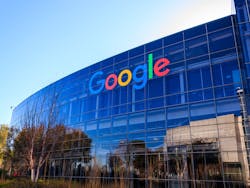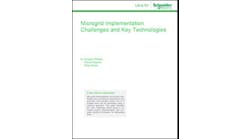The San Jose City Council voted this week to take the next step in reviewing a microgrid planned by Google, giving Mayor Sam Liccardo another victory in his quest for city energy independence.
“We need dependable, resilient, reliable power, and microgrids are clearly a pathway to doing so for many communities,” Liccardo said during the April 19 city council meeting.
Google plans to build the microgrid as part of an 81-acre mixed-use development on the west side of downtown San Jose.
The city’s council’s April 19 vote gives the city’s staff the ability to continue analyzing the microgrid plan in coordination with Google. The tech giant will pay the city $300,000 to cover the costs of city staff and consultants working on the review.
“We’re seeing that the value of both distributed generation and distributed storage and having the ability for Google to really foot the bill on what would be a very significant undertaking is a great opportunity for our city,” Liccardo said.
The microgrid would serve all properties in the development except for some residences and Phase 1 buildings. Designed to share power between the buildings, the microgrid would include a minimum of 7.8 MW of solar as well as energy storage.
Electricity is the energy of choice for the mixed-use project, according to a description filed by Google with the city. Natural gas would be available in only 20,000 square feet of restaurant kitchens. Home and office kitchens would use electric or induction cooking. Heating and cooling will come from heat pumps or electric resistance water heaters.
Google also plans to use about 47 emergency diesel generators, which are required under California Fire Code. The emergency generators would operate only during outages or standard monthly testing.
The city council’s support of the microgrid is part of a larger plan to decarbonize the city and create more local energy, an effort begun in 2019 after 60,000 San Jose residents lost power because Pacific Gas & Electric (PG&E) shut it off to avert wildfires.
Learn about the microgrid revolution at Microgrid 2022: The World Awakens to Microgrids, June 1-2 in Philadelphia, Pennsylvania
Following the outage, Liccardo lashed out at PG&E and called for study of a municipal utility.
During the April 19 city council meeting, Liccardo again took issue with PG&E, saying that the public safety power shutoffs amounted to the utility prioritizing “whatever was happening, hundreds of miles away from here” as opposed to placing a “premium on the wellbeing of the medically fragile people in our own city.”
He noted that the microgrid will serve not only Google facilities but hundreds of homes.
“I just want the public to be clear about why I’m supporting this [microgrid],” he said. “This is really critical for our energy resilience and the reliability of electric power, which is a huge problem, not just today, but will be a growing problem for the next several decades.”
In his most recent city budget message, he pushed for the creation of an interdepartmental team to look at the expansion of microgrid development, water purification and other resilience efforts. The city council uses the mayor’s message to guide its budget plan.
In addition to its efforts to improve energy resilience, the city has pledged to reach net-zero greenhouse gas emissions by 2030. It is working with its community choice aggregator, San José Clean Energy (SJCE), to reach the goal. In a joint statement this week, Liccardo and SJCE said that the city now has a 95% carbon-free electricity mix through their use of solar, wind, and hydroelectric power, which they said makes its electricity mix the cleanest among the ten largest cities in the country.
In all, SJCE has invested more than $1 billion to add new solar, wind, and battery storage to the grid.
Track news about the microgrid plans of Google and San Jose. Subscribe to the free Microgrid Knowledge Newsletter.







